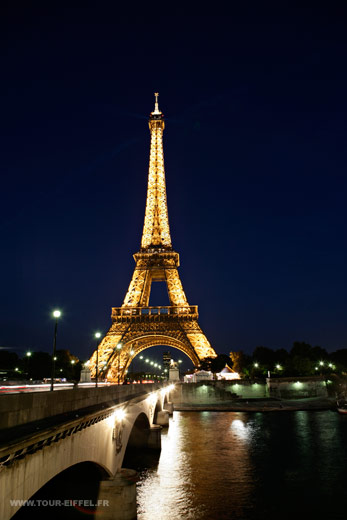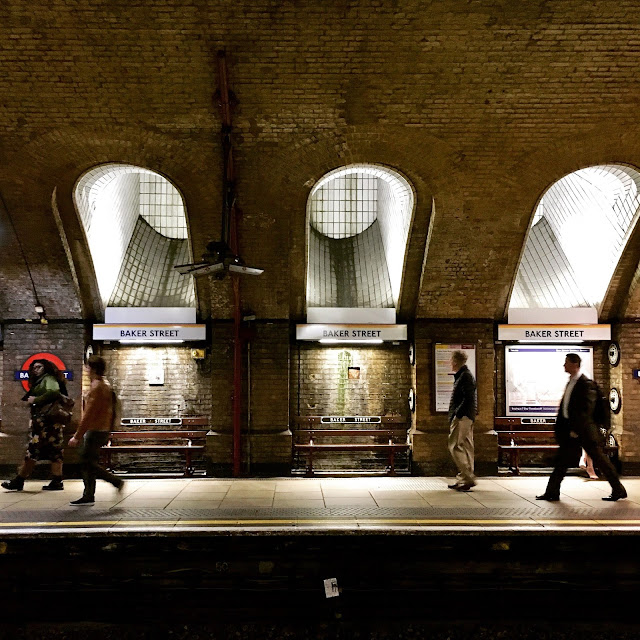England in Colour
A policeman directs buses in the intersection of Trafalgar Square, London.
IMAGE: CLIFTON R. ADAMS/NATIONAL GEOGRAPHIC CREATIVE/CORBIS
In the late 1920s and early 1930s National Geographic sent photographer Clifton R. Adams to England to record its farms, towns and cities, and its people at work and play.
Only, Adams happened to record it all in color using the Autochrome process.
The Autochrome was the foremost color photographic process of the day, since it was first brought to market by the Lumière brothers in 1907. The core ingredient? Potatoes. Tiny grains of dyed potato starch, around 4,000,000 per square inch, coated a glass plate. The gaps between the grains filled with lampblack, and the coated layer allowed the exposure to capture a color image.
In 1928 England, farming was a very significant part of life, with men and women employed in the fields. In fact, many of Adams' autochromes show women. That year British women attained full voting equality with men, via the Equal Franchise Act. Until the passage of the act, only women over 30 could vote in British elections.
Clifton R. Adams was 38 years old when he took these pictures. He photographed many other European countries, as well as Central and North America, working for National Geographic from 1920 until his death in 1934, aged just 44.
An English woman points pridefully to her farm cart, in Cambridgeshire, England.
Wicks of Wisbech constructed horse-drawn caravans used by Romany families
traveling throughout Britain.
IMAGE: CLIFTON R. ADAMS/NATIONAL GEOGRAPHIC CREATIVE/CORBIS
An informal portrait of a farmer and his cart, in Crowland, Lincolnshire.
Decoy Farm is now the site of a recycling centre and a housing estate.
IMAGE: CLIFTON R. ADAMS/NATIONAL GEOGRAPHIC CREATIVE/CORBIS
A police constable passes the day with farmers gathering hay, in Lancashire.
IMAGE: CLIFTON R. ADAMS/NATIONAL GEOGRAPHIC CREATIVE/CORBIS
Two women rest for lunch in a Lancashire hayfield.
IMAGE: CLIFTON R. ADAMS/NATIONAL GEOGRAPHIC CREATIVE/CORBIS
A young girl plays in the sand at Sandown, Isle of Wight.
IMAGE: CLIFTON R. ADAMS/NATIONAL GEOGRAPHIC CREATIVE/CORBIS
Actors dress for a pageant as Britannia and her knights.
IMAGE: CLIFTON R. ADAMS/NATIONAL GEOGRAPHIC CREATIVE/CORBIS
The characters of Britannia and her colonies and dependencies, in Southampton, Hampshire.
IMAGE: CLIFTON R. ADAMS/NATIONAL GEOGRAPHIC CREATIVE/CORBIS
Two women buy ice cream from a vendor out of his converted car, in Cornwall.
Kelly's ice cream is still in production today.
IMAGE: CLIFTON R. ADAMS/NATIONAL GEOGRAPHIC CREATIVE/CORBIS
A war veteran sells matches on the street, in Canterbury, Kent.
IMAGE: CLIFTON R. ADAMS/NATIONAL GEOGRAPHIC CREATIVE/CORBIS
A young girl sells artificial flowers for charity on Alexandra Day, in Kent.
The first Alexandra Rose Day was held in 1912; it commemorated the arrival in Britain
of Princess Alexandra of Schleswig-Holstein-Sonderburg-Glücksburg, from Denmark, in 1862.
She was betrothed to Prince Edward, later King Edward VII, and they married the next year.
Her admirers wished to mark the 50th anniversary of her arrival and she proposed marking it
by the sale of paper roses in aid of her favourite charities.
The day became an annual occasion.
IMAGE: CLIFTON R. ADAMS/NATIONAL GEOGRAPHIC CREATIVE/CORBIS
Women selling Queen Alexandra roses for charity,
in Seaford, East Sussex.
IMAGE: CLIFTON R. ADAMS/NATIONAL GEOGRAPHIC CREATIVE/CORBIS
Two bus drivers stand in front of a tour bus in Ulverston, Cumbria.
IMAGE: CLIFTON R. ADAMS/NATIONAL GEOGRAPHIC CREATIVE/CORBIS
In Oxford, the corner of High street and Cornhill is bustling.
IMAGE: CLIFTON R. ADAMS/NATIONAL GEOGRAPHIC CREATIVE/CORBIS
A view of the Cunard SS "Mauretania" at dock, in Southampton, Hampshire.
IMAGE: CLIFTON R. ADAMS/NATIONAL GEOGRAPHIC CREATIVE/CORBIS
A view of a vine-covered house on a Stratford-upon-Avon street, in Warwickshire.
IMAGE: CLIFTON R. ADAMS/NATIONAL GEOGRAPHIC CREATIVE/CORBIS
A young woman mails a letter at the pillar box, in Oxford.
IMAGE: CLIFTON R. ADAMS/NATIONAL GEOGRAPHIC CREATIVE/CORBIS
Women have tea in front of the Clock House, originally a hospice, in Buckinghamshire.
IMAGE: CLIFTON R. ADAMS/NATIONAL GEOGRAPHIC CREATIVE/CORBIS
A little boy mails a letter in the hedgerow, in Sussex.
IMAGE: CLIFTON R. ADAMS/NATIONAL GEOGRAPHIC CREATIVE/CORBIS
A London double-decker bus stops to allow people aboard.
IMAGE: CLIFTON R. ADAMS/NATIONAL GEOGRAPHIC CREATIVE/CORBIS
for British isles Friday.


